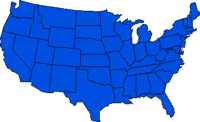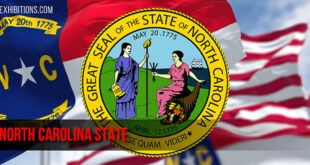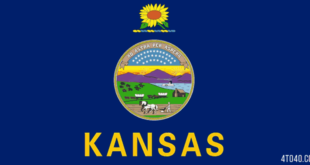 Delaware, one of the Mid-Atlantic states, Delaware is flanked by Delaware Bay, the Delaware River, and the Atlantic Ocean on the east; Maryland to the south and west; and Pennsylvania to the north. In 1609, Henry Hudson became the first European to explore the area, and in 1638 the first permanent settlement was established by Swedes. The state’s name is derived from that of Thomas West, Baron De La Warr, the first governor of Virginia, who served from 1609 to 1618. During most of its history, Delaware has combined elements of the urban, industrial north and of the more rural, agricultural south. Although larger only than Rhode Island, today its importance as an industrial state far exceeds its size. For more than 150 years the DU PONT family has played a major role in Delaware’s economy and politics.
Delaware, one of the Mid-Atlantic states, Delaware is flanked by Delaware Bay, the Delaware River, and the Atlantic Ocean on the east; Maryland to the south and west; and Pennsylvania to the north. In 1609, Henry Hudson became the first European to explore the area, and in 1638 the first permanent settlement was established by Swedes. The state’s name is derived from that of Thomas West, Baron De La Warr, the first governor of Virginia, who served from 1609 to 1618. During most of its history, Delaware has combined elements of the urban, industrial north and of the more rural, agricultural south. Although larger only than Rhode Island, today its importance as an industrial state far exceeds its size. For more than 150 years the DU PONT family has played a major role in Delaware’s economy and politics.
Land & Resources
 With the exception of a small area of rolling hills in the extreme north, Delaware consists of a low, gently undulating plain that slopes down to the Atlantic Ocean. Maximum elevations reach 135 m (442 ft) in the hills. The lowland belongs to the Atlantic coastal plain and the upland to the PIEDMONT region. The northeast to southwest-trending FALL LINE separates these two regions. Most of Delaware is characterized by two types of ultisols (soils built on clay accumulation): humults, with a high organic carbon content, found in northern and central sections; and aquults, with a higher clay content, found in coastal and southern sections.
With the exception of a small area of rolling hills in the extreme north, Delaware consists of a low, gently undulating plain that slopes down to the Atlantic Ocean. Maximum elevations reach 135 m (442 ft) in the hills. The lowland belongs to the Atlantic coastal plain and the upland to the PIEDMONT region. The northeast to southwest-trending FALL LINE separates these two regions. Most of Delaware is characterized by two types of ultisols (soils built on clay accumulation): humults, with a high organic carbon content, found in northern and central sections; and aquults, with a higher clay content, found in coastal and southern sections.
Rivers and Lakes
Most of the rivers of Delaware, including the Christina river and its tributary Brandywine Creek, are short and flow eastward; exceptions are the Nanticoke and Pomocoke in the extreme south, which empty southwestward into CHESAPEAKE BAY. Salt and freshwater marshlands are prevalent in the central portion of the state, along DELAWARE BAY. Pocomoke Swamp, the northernmost cypress swamp in North America, is located in southern Delaware. Groundwater is ample because of the presence of permeable marine deposits atop crystalline bedrock.
Climate
Delaware’s climate is humid-continental, with long summers and relatively mild winters. Wilmington has a mean temperature of 0 deg C (32 deg F) in January and 24 deg C (75 deg F) in July. Although Delaware lies in the storm track of Gulf of Mexico disturbances and continental weather systems from the west, the Atlantic Ocean and Chesapeake Bay exert a moderating influence. Annual precipitation averages 1,105 mm (44 in).
Vegetation and Animal Life
Oak, beech, walnut, maple, and dogwood woodlands are prevalent in northern Delaware. In the south, loblolly and Virginia pines are mixed with sweet and black gums, oaks, maples, yellow poplars, and hollies. Forest covers 1,611 sq km (622 sq mi), nearly all of which is of commercial quality. Deer and small game–raccoon, opossum, fox, and muskrat–are present throughout Delaware. The state is on the Atlantic migratory bird flyway, and the marshy Delaware Bay shore is a refuge for both migrating and local birds.
Historical Sites and Recreation
Among the state’s historical sites are NEW CASTLE, with a historic district containing many 17th- and 18th-century buildings; “Old Swedes” church (used since 1699) in Wilmington; Fort Delaware (completed 1860) on Pea Patch Island; Dickinson House (built 1740) near Dover; and the State House (built 1792), in DOVER, one of America’s oldest state capitals. The Bombay Hook, Primehook, and Chesapeake and Delaware Canal wildlife refuges are in Delaware; Delaware Seashore, Cape Henlopen, and Brandywine Creek are the principal state parks. Rehoboth Beach is a well-known resort.
History
The Lenni-Lenape, or Delaware, were the original inhabitants. In 1631 the first European settlement was attempted when the DUTCH WEST INDIA COMPANY established a tobacco-growing and whaling industry at Zwaanendael (present-day Lewes). It lasted only a year because of Indian attacks. In 1638 Swedish settlers established the first permanent settlement, Fort Christina (present-day Wilmington), as part of the colony of NEW SWEDEN.
In 1655 the colony was lost to the Dutch, who, in turn, surrendered it to the British in 1664. In 1682, Delaware came under the proprietorship of William PENN, but it was administered separately from Pennsylvania as a distinct entity called the “three counties of Delaware.” Delaware became (1787) the first state to ratify the U.S. Constitution.
Geographically and historically, Delaware has a dual personality, which it acquired early and has never lost. New Castle County in the north, where Wilmington is located, grew in response to urban-industrial developments in nearby Philadelphia; Kent and Sussex counties to the south remained rural and culturally a part of the American South. As early as the 1730s Wilmington was a developing grain port and shipbuilding center at the confluence of the Christina and Delaware rivers. The Christina gave Wilmington access to its hinterland, and nearby Brandywine Creek provided excellent mill sites. Thus one of America’s most intensive manufacturing districts came into being. In 1802 a French immigrant, Eleuthere Irenee du Pont de Nemours, established a powder mill near Wilmington, beginning Delaware’s chemical industry.
By the mid-19th century the Delaware landscape had lost its frontier appearance. In New Castle County, industry had expanded from simple tanning, grain milling, and paper making to sophisticated gunpowder and textile manufacturing, benefiting from improved turnpikes, the construction (1829) of the Chesapeake and Delaware canal, and the completion of the Philadelphia, Wilmington, and Baltimore Railroad. In 1856 the construction of a railroad extending the length of the state brought an agricultural boom to southern Delaware but did not change the rural character of the area.
Although Delaware was a slave state, in 1860 it had less than 2,000 slaves and about 20,000 free blacks. Delaware was divided over the slavery issue during the Civil War; the majority, however, was moderate and supported the Union. Although never fully trusted by the rest of the North, many soldiers from Delaware fought in the Union army. After the Civil War black rights were vigorously opposed. In 1873 blacks were effectively disenfranchised by poll taxes and corrupt political practices. The poll tax was replaced (1897) by a literacy test.
Economic growth continued after the Civil War and was concentrated in the Wilmington area. It was aided by tax laws instituted in 1899, encouraging corporations to locate their headquarters in Wilmington. By 1920 the city contained almost half of Delaware’s population.
Partly because of the conservative influence of southern Delaware, the state lagged behind many others in such areas as prison reform and social services. As a result of legislative conflict between northern and southern factions, state unemployment insurance was withdrawn (1934) at the height of the Great Depression. Legislative districts that had long benefited the rural south were not redrawn until the 1960s in favor of the more populous Wilmington suburbs. In 1968, when riots by unemployed blacks broke out in Wilmington, the National Guard was called in. Present-day Delaware faces a problem common to much of the United States–that of suburban crowding as a result of rapid development. Economic growth in Delaware in the 1980s was fueled by the passage of laws favorable to banking and corporate interests, but as the state entered the 1990s the issue of economic growth at the expense of the environment was a continuing debate.
Land
- Area: 6,447 sq km (2,489 sq mi); rank: 49th.
- Capital: Dover (1990 pop., 27,630).
- Largest city: Wilmington (1990 pop., 71,529).
- Counties: 3.
- Elevations: Highest–135 m (442 ft), in New Castle County; lowest–sea level, at Atlantic coast.
 Kids Portal For Parents India Kids Network
Kids Portal For Parents India Kids Network









